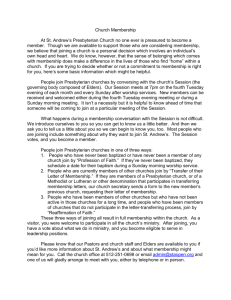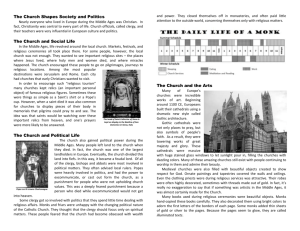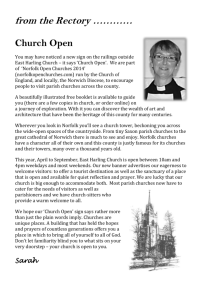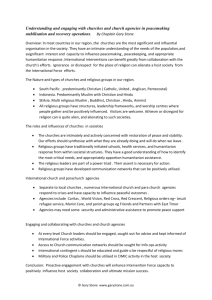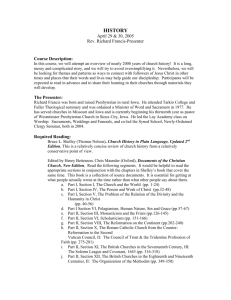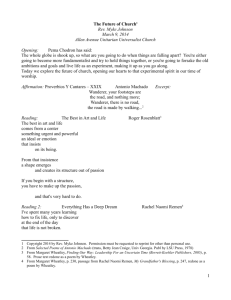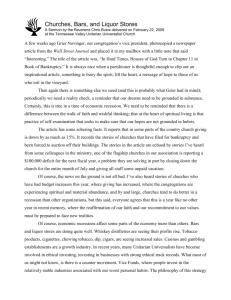file - From Evidence to Action
advertisement
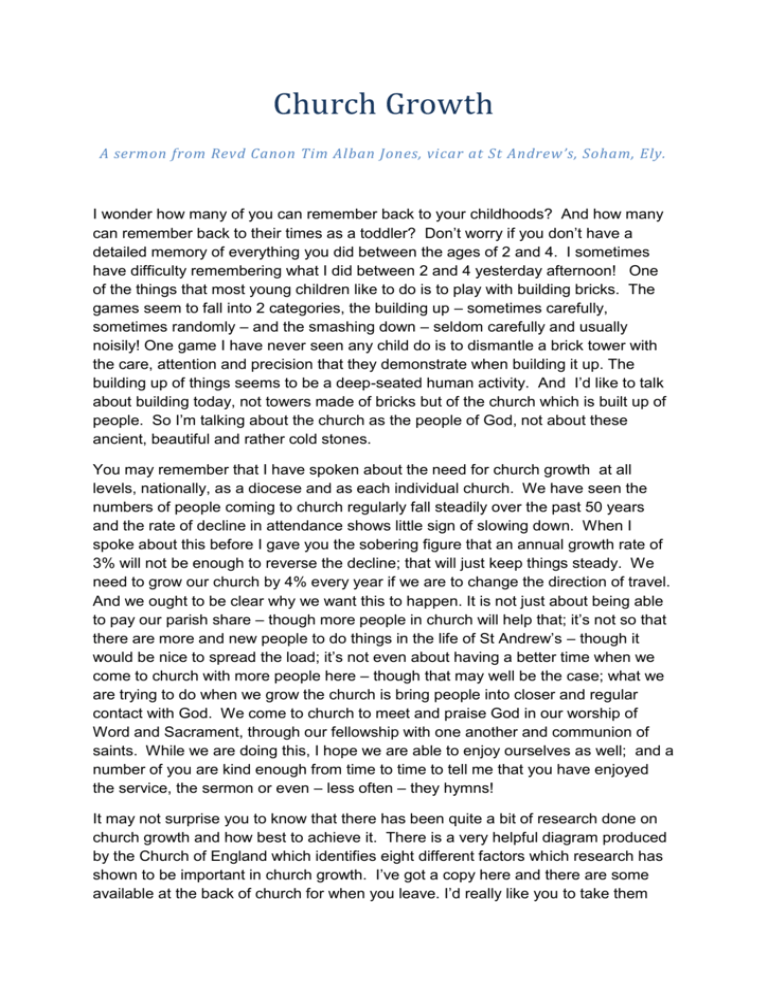
Church Growth A sermon from Revd Canon Tim Alban Jones, vicar at St Andrew’s, Soham, Ely. I wonder how many of you can remember back to your childhoods? And how many can remember back to their times as a toddler? Don’t worry if you don’t have a detailed memory of everything you did between the ages of 2 and 4. I sometimes have difficulty remembering what I did between 2 and 4 yesterday afternoon! One of the things that most young children like to do is to play with building bricks. The games seem to fall into 2 categories, the building up – sometimes carefully, sometimes randomly – and the smashing down – seldom carefully and usually noisily! One game I have never seen any child do is to dismantle a brick tower with the care, attention and precision that they demonstrate when building it up. The building up of things seems to be a deep-seated human activity. And I’d like to talk about building today, not towers made of bricks but of the church which is built up of people. So I’m talking about the church as the people of God, not about these ancient, beautiful and rather cold stones. You may remember that I have spoken about the need for church growth at all levels, nationally, as a diocese and as each individual church. We have seen the numbers of people coming to church regularly fall steadily over the past 50 years and the rate of decline in attendance shows little sign of slowing down. When I spoke about this before I gave you the sobering figure that an annual growth rate of 3% will not be enough to reverse the decline; that will just keep things steady. We need to grow our church by 4% every year if we are to change the direction of travel. And we ought to be clear why we want this to happen. It is not just about being able to pay our parish share – though more people in church will help that; it’s not so that there are more and new people to do things in the life of St Andrew’s – though it would be nice to spread the load; it’s not even about having a better time when we come to church with more people here – though that may well be the case; what we are trying to do when we grow the church is bring people into closer and regular contact with God. We come to church to meet and praise God in our worship of Word and Sacrament, through our fellowship with one another and communion of saints. While we are doing this, I hope we are able to enjoy ourselves as well; and a number of you are kind enough from time to time to tell me that you have enjoyed the service, the sermon or even – less often – they hymns! It may not surprise you to know that there has been quite a bit of research done on church growth and how best to achieve it. There is a very helpful diagram produced by the Church of England which identifies eight different factors which research has shown to be important in church growth. I’ve got a copy here and there are some available at the back of church for when you leave. I’d really like you to take them away and look at them and think about them and, better still, pray about them. They include some fairly obvious ones. Churches who are actively engaged with children and young people are often ones where growth takes place. Our monthly Messy Church and our weekly Little Fishes and our newly re-established Youth Group are very straightforward attempts to engage actively with children and young people. Interestingly, churches with a wide age profile are more likely to grow than those with a fairly narrow age profile. We might all expect that in a church of senior citizens, but it is just as true in churches where there are no grandparents as in churches where there are no children. There are other factors which you might expect to find, like a willingness to change and adapt. You may think that we are pretty stuck in our ways – and perhaps by comparison with some, we may be – but one of our strengths here is very definitely the way in which we are able to adapt to different circumstances. We also score quite well on another of the factors of church growth and that is in the involvement of lay people as well as clergy in leadership roles. There are some churches where the vicar always knows best; I think I have been here long enough and you know me well enough to realise that this definitely does not apply here! St Andrew’s is not my church; if it’s anybody’s church it is our church, but actually we know it’s God’s church. I have remarked before how odd it is to see signatures in our visitors’ book from people in Soham. Perhaps we need to work a bit harder to help them understand that it’s their church as much as ours. I won’t detail all the other factors that have been identified in the findings of the Church of England, but I would like to leave you with just one more. And this one is a bit strange. Churches which are growing are those where the clergy and the congregation are intentional about growth and prioritise growth. The greatest enemy of church growth is the attitude which, when confronted with change or difficult , says that we don’t need to do anything because ‘it will see me out’. If that is our expectation of God’s love and God’s grace, it is - at best – rather limited. At worst it is a narrow and selfish attitude of mind which won’t be able to hand on to successive generations the treasures that we have had handed on to us. As stewards of God’s resources we have a duty to look after what we have inherited and pass them on in a way that is at least as good as we got them, not worse or broken. ‘It will see me out’ means there will be nothing left to hand on. It is a bit like the foolish bridesmaids about whom we heard in our Gospel reading: when the bridegroom arrived they had no oil. So I’d like to end with a challenge to us all. How intentional are we about church growth? Do we really want more people to know God here in Soham? Are we prepared to change and adapt so that we can accommodate new people? I believe that we have great treasures in our church – and I’m still talking about the people, not the building. I am reminded of St Laurence, after whom our sister church is named. When he was asked to hand over the treasures of the church by his persecutors he rounded up the poor and all the others whom society had rejected and said that they were the treasures of the church, not the gold and precious things that the authorities wanted. Our treasure is the love of God, revealed supremely in the person of his Son Jesus. Our reason for church growth is to share that precious gift as widely as possible.

